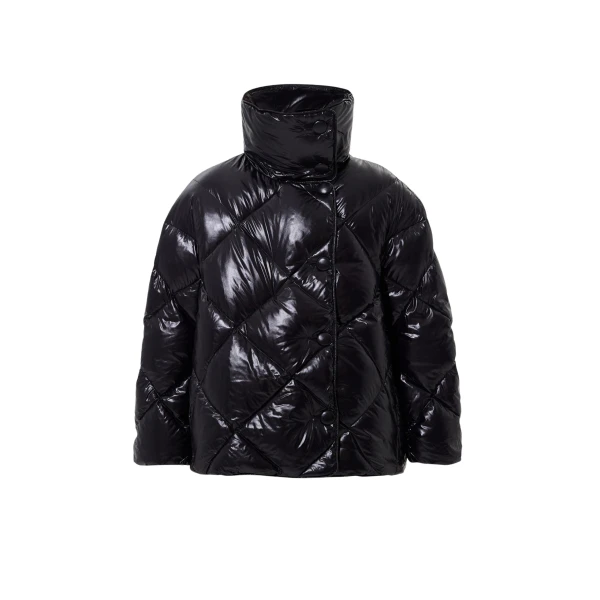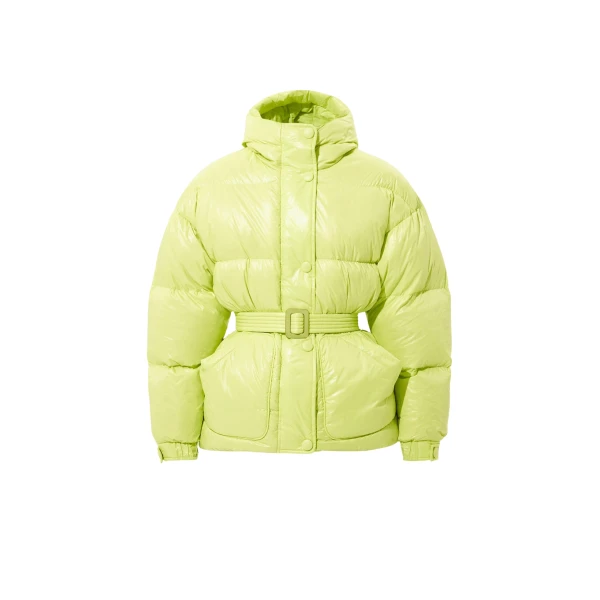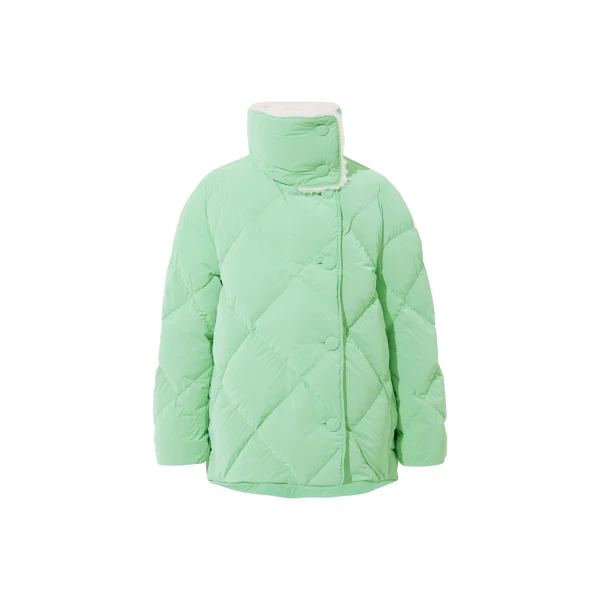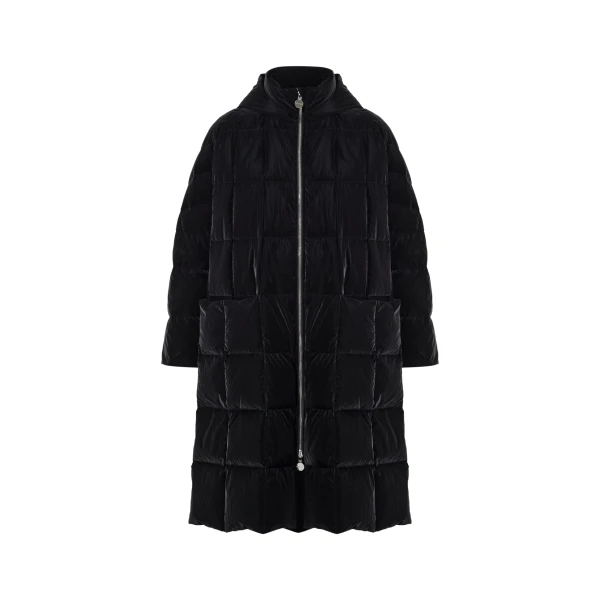
Ienki Ienki
Folk Keptar Vest Suede Black
$1,855
Select options
This product has multiple variants. The options may be chosen on the product page
Kenny Jacket Soft Khaki
$1,734
Select options
This product has multiple variants. The options may be chosen on the product page
Queen Jacket Silky White
$2,134
Select options
This product has multiple variants. The options may be chosen on the product page
Queen Jacket Silky Lime
$2,134
Select options
This product has multiple variants. The options may be chosen on the product page
Cozy Queen Jacket Micro Brown
$1,908
Select options
This product has multiple variants. The options may be chosen on the product page
Wendy Jacket Soft Khaki
$1,814
Select options
This product has multiple variants. The options may be chosen on the product page
Pyramide Jacket Soft Khaki
$2,055
Select options
This product has multiple variants. The options may be chosen on the product page
Michlin Jacket Soft Red
$2,055
Select options
This product has multiple variants. The options may be chosen on the product page
Cozy Michlin Jacket Micro Stone Blue
$1,908
Select options
This product has multiple variants. The options may be chosen on the product page
Rowena Jacket Soft Pale Pink
$2,134
Select options
This product has multiple variants. The options may be chosen on the product page
Diamond Balloon Jacket Micro Pomegranate + Micro Brown
$1,067
Select options
This product has multiple variants. The options may be chosen on the product page
Michlin Jacket Silky Black
$2,134
Select options
This product has multiple variants. The options may be chosen on the product page
Cozy Vest Micro Bright Blue
$1,508
Select options
This product has multiple variants. The options may be chosen on the product page
Poncho Silky Lime
$1,908
Select options
This product has multiple variants. The options may be chosen on the product page
Quilted Parka Soft Khaki
$2,143
Select options
This product has multiple variants. The options may be chosen on the product page
Zip Vest Silky White
$1,667
Select options
This product has multiple variants. The options may be chosen on the product page
Zip Vest Silky Lime
$1,667
Select options
This product has multiple variants. The options may be chosen on the product page
Bomber Jacket Powder Black
$1,814
Select options
This product has multiple variants. The options may be chosen on the product page
Cozy Vest Micro Brick Orange
$1,508
Select options
This product has multiple variants. The options may be chosen on the product page
Kalik Down Shirt Soft Khaki
$1,320
Select options
This product has multiple variants. The options may be chosen on the product page
Zip Vest Silky Black
$1,667
Select options
This product has multiple variants. The options may be chosen on the product page
Queen Jacket Silky Black
$2,134
Select options
This product has multiple variants. The options may be chosen on the product page
Shearling Queen Jacket Powder Pink
$2,134
Select options
This product has multiple variants. The options may be chosen on the product page
Kalik Down Shirt Soft Pale Pink
$1,320
Select options
This product has multiple variants. The options may be chosen on the product page
Queen Jacket Silky Red
$2,134
Select options
This product has multiple variants. The options may be chosen on the product page
Pyramide Jacket Soft Beige
$2,055
Select options
This product has multiple variants. The options may be chosen on the product page
Quilted Parka Soft Black
$2,134
Select options
This product has multiple variants. The options may be chosen on the product page
Cozy Queen Jacket Micro Yellow
$1,908
Select options
This product has multiple variants. The options may be chosen on the product page
Keptar Jacket Powder Pink
$1,908
Select options
This product has multiple variants. The options may be chosen on the product page
Cozy Michlin Jacket Micro Black
$1,908
Select options
This product has multiple variants. The options may be chosen on the product page
Cozy Vest Micro Yellow
$1,508
Select options
This product has multiple variants. The options may be chosen on the product page
Michlin Jacket Silky Lime
$2,134
Select options
This product has multiple variants. The options may be chosen on the product page
Shearling Queen Jacket Powder Ivory
$2,134
Select options
This product has multiple variants. The options may be chosen on the product page
Michlin Jacket Soft Black
$2,055
Select options
This product has multiple variants. The options may be chosen on the product page
Shearling Queen Jacket Powder Mint
$2,134
Select options
This product has multiple variants. The options may be chosen on the product page
Michlin Jacket Silky Red
$2,134
Select options
This product has multiple variants. The options may be chosen on the product page
Cozy Queen Jacket Micro Pink
$1,908
Select options
This product has multiple variants. The options may be chosen on the product page
Wendy Jacket Soft Beige
$1,814
Select options
This product has multiple variants. The options may be chosen on the product page
Pyramide Jacket Powder Black
$2,134
Select options
This product has multiple variants. The options may be chosen on the product page
Zip Vest Silky Red
$1,667
Select options
This product has multiple variants. The options may be chosen on the product page
Zip Vest Soft Black
$1,587
Select options
This product has multiple variants. The options may be chosen on the product page
Kalik Down Shirt Micro Pomegranate
$1,320
Select options
This product has multiple variants. The options may be chosen on the product page
Kalik Down Shirt Micro Brown
$1,320
Select options
This product has multiple variants. The options may be chosen on the product page
Poncho Silky White
$1,908
Select options
This product has multiple variants. The options may be chosen on the product page
Kalik Down Shirt Powder Ivory
$1,361
Select options
This product has multiple variants. The options may be chosen on the product page
Cropped Keptar Vest Powder Ivory
$1,548
Select options
This product has multiple variants. The options may be chosen on the product page
Folk Cropped Keptar Vest Suede Black
$1,734
Select options
This product has multiple variants. The options may be chosen on the product page
Cozy Queen Jacket Micro Stone Blue
$1,908
Select options
This product has multiple variants. The options may be chosen on the product page
Poncho Soft Khaki
$1,744
Select options
This product has multiple variants. The options may be chosen on the product page
Poncho Silky Black
$1,908
Select options
This product has multiple variants. The options may be chosen on the product page
Ienki Ienki: Mastering the Slopes in Style and Comfort
IENKI IENKI has carved a niche for itself in the world of winter fashion, particularly with its luxurious and technically adept ski jackets and apparel. But is it all about the hype, or does the brand truly deliver on its promises of performance and panache? Let’s delve into the world of IENKI IENKI skiwear, exploring its jackets, coats, pants, and the all-important care tips to keep your investment pristine.
IENKI IENKI Jackets: Where Fashion Meets Function
IENKI IENKI jackets are renowned for their bold silhouettes and unconventional designs, often incorporating oversized fits, statement collars, and unexpected fabric choices. However, beneath the fashion-forward exterior lies a core of technical prowess. The jackets are crafted with high-performance materials like Gore-Tex® and Primaloft® Black Eco insulation, ensuring exceptional waterproofing, breathability, and warmth.
Image of Ienki Ienki Ski JacketOpens in a new window
fetching.co.kr
Ienki Ienki Ski Jacket
Some of IENKI IENKI’s most coveted jacket styles include:
The Michelin Jacket: This iconic puffer jacket is instantly recognizable for its Michelin tire-inspired tread pattern and pillowy down filling. It offers superior warmth and weather protection, making it a favorite for cold and blustery conditions.
Image of Ienki Ienki Michelin JacketOpens in a new window
pinterest.com
Ienki Ienki Michelin Jacket
The Shearling Queen Jacket: This luxurious jacket features a plush shearling lining and a relaxed fit, exuding elegance and comfort on the slopes.
Image of Ienki Ienki Shearling Queen JacketOpens in a new window
clothbase.com
Ienki Ienki Shearling Queen Jacket
The Cozy Michlin Jacket: A scaled-down version of the Michelin Jacket, this cozy option is perfect for milder days or layering under a shell.
Image of Ienki Ienki Cozy Michlin JacketOpens in a new window
ienki-ienki.com
Ienki Ienki Cozy Michlin Jacket
IENKI IENKI Coats: Statement Pieces for the Après-Ski Scene
Beyond the slopes, IENKI IENKI coats amp up the après-ski style with their bold colors, statement textures, and playful details. From long puffer coats with oversized hoods to tailored wool peacoats with fur accents, the brand offers a variety of options to make a lasting impression.
Image of Ienki Ienki AprèsSki CoatOpens in a new window
www.shopstyle.com
Ienki Ienki AprèsSki Coat
Conquering the Powder in Style: IENKI IENKI Ski Pants and Clothing
IENKI IENKI’s ski pants and clothing line complements its jackets perfectly, ensuring a coordinated and stylish look on the mountain. The pants are crafted with durable materials and feature articulated knees and adjustable waistbands for maximum comfort and freedom of movement.
Image of Ienki Ienki Ski PantsOpens in a new window
www.ebay.co.uk
Ienki Ienki Ski Pants
Keeping Your IENKI IENKI Gear in Pristine Condition: Washing and Cleaning Tips
Maintaining the quality and performance of your IENKI IENKI skiwear is crucial. Here are some key tips for washing and cleaning your gear:
Always refer to the care label on your specific garment for detailed washing instructions.
Generally, IENKI IENKI jackets and pants can be machine-washed on a gentle cycle with cold water and a mild detergent. Avoid using bleach or fabric softeners.
Down-filled jackets may require special care. Check the care label or consult a professional cleaner for down-specific washing instructions.
Air-dry your IENKI IENKI garments whenever possible. Avoid using high heat, as this can damage the materials.
Ensuring Optimal Fit: How a Ski Jacket Should Feel
A proper fit is essential for both comfort and performance on the slopes. Your IENKI IENKI ski jacket should:
Allow for layering without feeling constricting.
Move freely with your body as you ski or snowboard.
Have armholes that accommodate gloves comfortably.
Fall at or just below your hips to provide adequate coverage.
The Final Verdict: Is IENKI IENKI Worth the Investment?
IENKI IENKI caters to skiers and snowboarders who seek high-performance gear that doesn’t compromise on style. The brand’s jackets, coats, pants, and clothing offer a unique blend of fashion and function, making them a desirable choice for discerning winter sports enthusiasts. However, the premium price tag might deter some budget-conscious shoppers. Ultimately, the decision of whether IENKI IENKI is worth the investment depends on your individual priorities and budget.
If you’re looking for cutting-edge technology, bold designs, and a touch of luxury, IENKI IENKI is definitely a brand to consider. But if you prioritize affordability and a more traditional skiwear aesthetic, other options might be more suitable.
Remember, the most important factor is to choose gear that fits you well, keeps you
Get your hands on the hottest trend and show off your clever style. How to style maxi dress. You may want to check out our styling edit and learn more about how to style a maxi dress, and how to wear red and green colors in the season trend. How to style maxi dress
VIEW MORE: Fur Coats, Sable Coat, Mink Coats, Coats, Designers, British Designers, Arab Designers, Women’s, Women’s Clothing, Modern Modesty, The Dress Edit, The Refresh Edit, Dresses, cocktail party Dresses, Midi Dresses, Maxi Dresses, Tops, Skirts, cocktail parties. luxury kaftan dresses, Aje, Wonderland Kaftan
































































